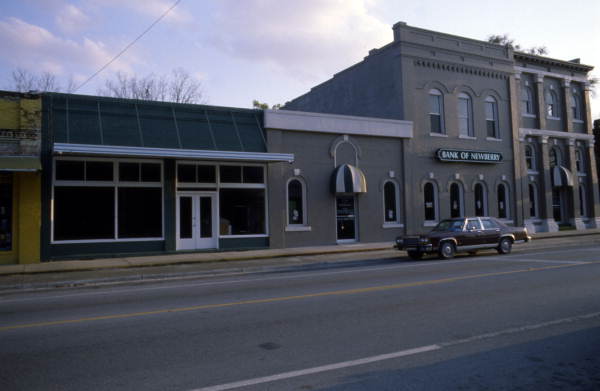ChazzCreations Limited
© 1974-2025 ChazzCreations.com A Non~profit Organization. Over 50 years of Family Genealogy Research. Pictures may be used or copied with the hopes that it keeps the family history going to the next generation...
ChazzCreations
PO BOX 1909
POST FALLS, ID 83877
- Family Genealogy Research
- Contact Us
- Thomas~Shaw~Langston~Scott~Roberts~Dell: Family Connections
- Isham B. Thomas Family History
- Shaw Family History
- Benjamin Thomas Shaw Family History
- Shaw Farms
- Matilda Eva Shaw~Waters~Mixon~Novak
- Joseph Shaw & Lick Skillet ~ Cohutta ~ Red Clay Georgia
- Dell Family of Alachua County
- Kicklighter Genealogy
- Langston Family Ties
- Roberts Family History
- Scott Family Connection
- City of Odum, GA (son of Mary Thomas & James Odum)
- Thomas: William Matthew & Avoy A. Thomas Connection
- Thomas: Rowland Thomas Family of Alachua
- Thomas & Douglas Cemetery, Alachua
- Rimes~Dekle~Rivers~Ulmer~Cone: The Family Connections
- Waters~Barron~DeLoach~Fugate~Gornto~Townsend: Connections
- Waters & The Florida Rail System
- Military Service: Family History
- 1700's Quit Rent
- French & Indian War 1754-1763
- The Revolution War 1775 -1783
- War of 1812
- CSA: Family Connections
- CSA: Florida
- CSA: Officers
- CSA: The Four Lee's
- CSA: Pictures of the War
- CSA: Navy
- The Civil War: 150 years later
- The Seminole Wars
- Spanish American War
- World War I
- World War II
- Korean War
- Vietnam Era
- New Generations in the Military
- Funeral Notices
- Family, Marriage & Cemetery Links
- Florida History
- Florida Pictures
- City of Alachua
- Alachua County History
- Alachua County Historic Towns
- Alachua County Historical Homes
- Alachua County Significant County Buildings & Sites
- Gilchrist County
- Union County (Rimes~Dekle)
- My Miami Dolphins
- Grandchildren's Site
- Award Winning Photography
- Robert Brewer & Dunham Family History Conections
- Warren H. Folks
- Flanagan Family History
- Gerald Lemuel Mixon
- Mize Genealogy
- John Aleis Mize Family History
- Mize Hazel Green Homestead
- Hazel Green Academy History
- Hazel Green-Bowling Green-Mize, KY Pictures
- Wolfe County & Kentucky Statehood History
- The Sigma Chi Fraternity
- Hazel Green Cemetery
- Cockrell Family History
- Oldham Family History
- Rose Family History
- Swango Family History
- Swope Family History
- Tipton Family History
- Trimble Family History
- Walker Family History
- WindWalkerWaters Spiritual Wisdom
Newberry













1916

Cheves Ice Factory

Cheves Ice Factory

Newberry Train Depot



 Newberry High School
Newberry High School

The Historic Dudley Farm

Capt. Phillip Benjamin Harvey Dudley, 1814-1881 CSA
In the mid-1800s, the Dudley family moved from Charleston, SC to North Central Florida. Three generations owned and worked the 640-acre piece of land. By the 1880s, the Dudley farm was a significant crossroads community, successfully maintaining livestock, crops and large vegetable gardens and attaining prominence in Alachua County. Phillip Benjamin Harvey Dudley, Jr. assumed ownership of the farm in 1881 and began to develop the complex farm. Eighteen buildings constructed between the 1880s and 1945 include the 1880s family farmhouse and separate kitchen, general store, dairy shed, canning house, smokehouse, syrup house and mill, hay and tobacco barns, stables, and drinking well. Now an authentic working farm, the homestead consists of the original eighteen buildings, including the family farmhouse with some of the original furnishings, an 1880s kitchen outbuilding, a general store, sweet potato cellar, and a cane syrup complex. Interpreters may be working the farm in the lifestyle of the 1880s to 1940s as they perform daily chores, work the crops, and tend to livestock.

Staff and volunteers dress in period clothing and complete traditional chores, including tending to livestock and sugar cane farming. Dudley Farm Historic State Park, also listed on the National Register, has been described as the best-documented pioneer family farm in the nation. Dressed in period clothing, park staff members perform daily chores, raise crops and tend to livestock in traditional ways. Visitors can enjoy seasonal events such as cane grindings and learn about heritage varieties of livestock and plant. 
Farm house

Barn and pump house

Oat thrashing

Storing silage

Water tower and well









Bartram Trail
Depot
© 1974-2025 ChazzCreations.com© © All rights reserved
ChazzCreations
PO BOX 1909
POST FALLS, ID 83877